Search
Did you mean: The Dagda?
Search Results
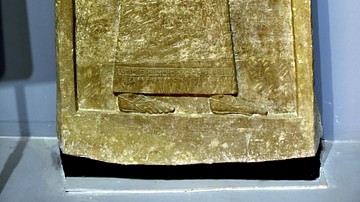
Image
Stele of Adad-Nirari III
Limestone stele of the Assyrian king Adad-Nirari III (r. 810-783 BCE) from Tell al-Rimah, in modern-day Nineveh Governorate, Iraq. The king is praying before gods and goddesses symbols. The cuneiform inscriptions mention the king's titles...
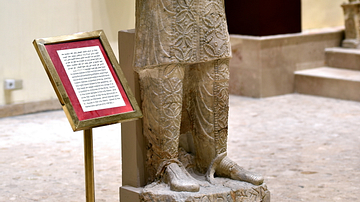
Image
Statue of Sanatruq I from Hatra
This is, a little bit larger than a life-size, marble statue of Sanatruq I (reigned c. 140 - 180 CE), king of Hatra. The king wears an exquisitely carved dress and a headdress of an eagle. His right hand is raised in salutation while the...
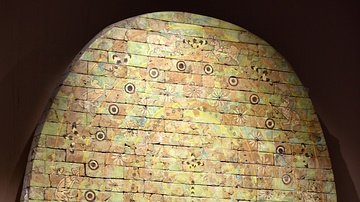
Image
Glazed Wall Panel from Fort Shalmaneser
This large wall panel of vibrant glazed bricks was once placed above the entrance to a vast room (T3) next to Shalmaneser III's throne room at Fort Shalmaneser in Nimrud (in modern-day Nineveh Governorate, Iraq). The whole panel is composed...
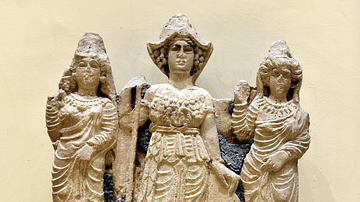
Image
Relief of Al-Lat from Hatra
This carved scene in relief depicts 3 women above a standing and roaring lion. In the middle Al-Lat (also Allat, Allatu, and Alilat) wears a wonderful military attire and head cap (similar to Athena). Her right arm holds a long spear while...
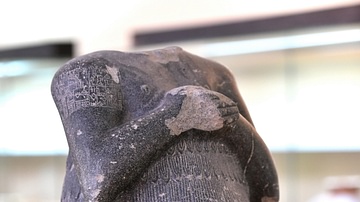
Image
Headless Statue of Entemena of Lagash
This black diorite statue depictes Entemena, a king (or ruler) of Lagash, around 2400 BCE; identified by the cuneiform inscriptions on the right shoulder and back. The king wears the typical flounced Sumerian skirt. The statue was found in...
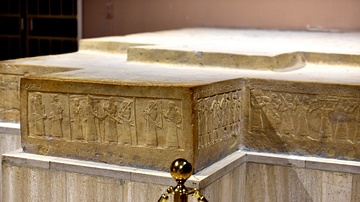
Image
Throne Dais of Shlamaneser III at the Iraq Museum
This dais was found in the eastern end of the throne room (T1) at Fort Shalmaneser in the city of Nimrud (in modern-day Nineveh Governorate, Iraq) in 1962 CE. The upper surface is decorated with geometrical floral motifs and inscribed with...
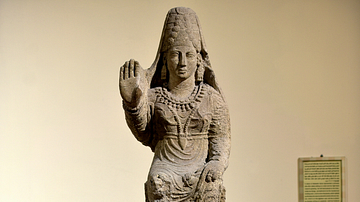
Image
Statue of Abu Bint Jablo, Hatra
The Aramaic inscription on the base of the statute states that it was commissioned by Abu Bint Jablo's husband in her memory and that she was assassinated for an unknown reason under vague circumstances at the age of 18. The inscription also...
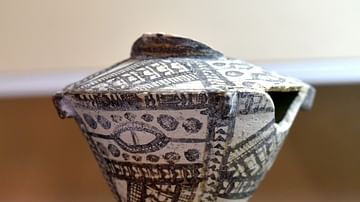
Image
Pottery Vessel from Ninevite V Culture
This peculiar pottery vessel was found at Nineveh, Iraq. The surface is painted with different geometric shapes. Ninevite V period/culture of Upper Mesopotamia, c. 2900-2600 BCE. On display at the Iraq Museum in Baghdad.
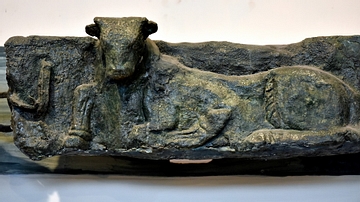
Image
Cow from Tell al-'Ubaid
This recumbent cow once decorated the facade of the Temple of Ninhursag at Tell al-'Ubaid, in modern-day Dhi Qar Governorate, Iraq. Early Dynastic period, 2800-2600 BCE. On display at the Iraq Museum in Baghdad, Republic of Iraq.
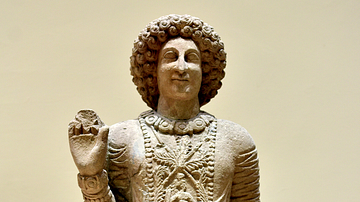
Image
Statue of Prince Absadmiya from Hatra
A statue of Absadmiya, the son of king Sanatruq I of Hatra (reigned c. 140 - 180 CE). His right arm is raised in salutation while the left hand holds a palm branch. He wears an elegant and exquisitely carved dress. The feet are lost. The...